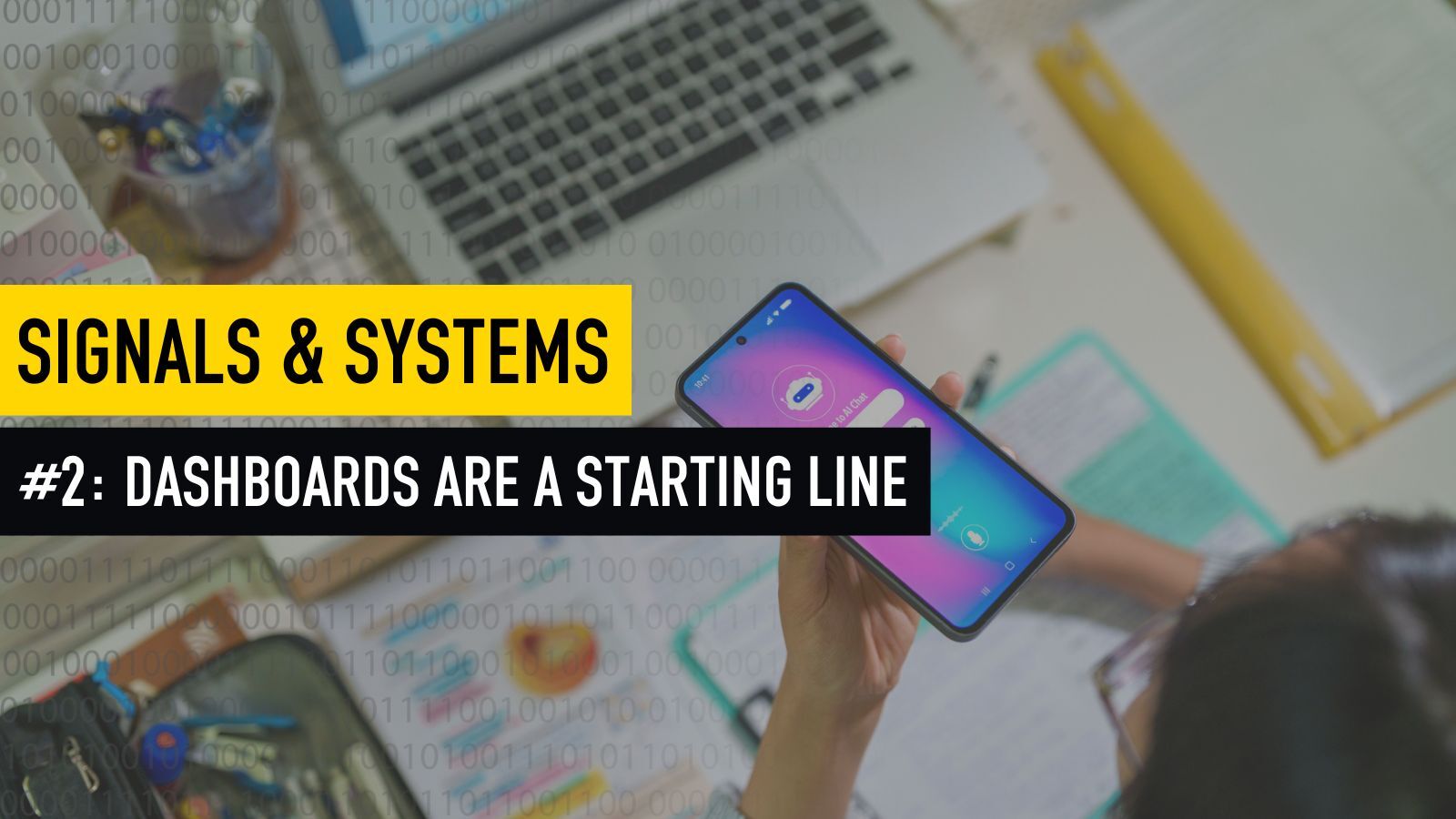Signals & Systems is a series sharing straightforward insights on technology, leadership, and day-to-day execution, directly from the operator’s perspective. Written by OAG COO Filip Filipov, each edition decodes the signals pointing to the future of tech and the systems we're using to get there.
Welcome back to Signals & Systems. Every second Tuesday, I explore the signals and systems shaping AI, travel, and leadership. This week, we shift gears from signals and systems to a topic I think about a lot: dashboards.
1 | Dashboard theatre is real
Dashboards are everywhere. They sit on 60-inch screens in all-hands, in the board pack, in Notion, in Salesforce, in Looker.
And yet — most of the time, they’re performance theatre. While they show the numbers, they rarely change minds. Sometimes, if done right, they can explain the bast, but unless carefully crafted, they rarely shape the future.
Dashboards and the underlying metrics behind are the first step of a journey to understanding why they exist: it’s to create shared context and support better decisions.
When they’re built well, dashboards become internal mirrors. When they’re built right, they become internal training loops.
2 | The real goal is the loop
Here’s how I think about internal metrics — not as a reporting system, but as a system of awareness and action.
Gather and automate the information. Build trust in the data. Pipe it in cleanly and automate as much as possible. Ensure teams don't have competing measurements for the same metrics and establish a single source of truth. This is the foundation.
Define leading and lagging indicators. Most teams gather as much information as possible, without sifting through and challenging which of these data points are something they can affect as a team versus out of their control. It is critical to understand cause and effect relationships - what's a leading and lagging indicator. Revenue is lagging. Product adoption, rep activity, churn signals — those lead. Ideally, the system should tell you what’s coming, not just what happened.
Set benchmarks and thresholds. This is where you build early warning indicators. You want a signal before the results fall off a cliff. Is 20% WoW swing seasonal and expected or is it a strong signal we need to act now as a team?
Establish a decision-making loop. Dashboards should feed a rhythm — a weekly or fortnightly review where cross-functional teams can see the same information, respond, and act. The outcome of good dashboards is the timely decisions a team can make to act early and effect change.
Most companies stop at the first step, as it shows a level of professionalism and principled monitoring to give an impression that we are in control and we know what is happening. Yet, our goal, as leaders and operators, should be the last one.
A good dashboard isn’t a homepage. It’s a habit.
3 | What this looks like in practice
The highest-functioning teams I’ve worked with treat metrics as shared ground. Everyone sees the same thing. Everyone understands what they can influence. And everyone knows that visibility = accountability.
It’s less about the format and more about the rhythm:
- Review the numbers on the same day, in the same forum
- Ask: what’s off track, and why?
- If a conversation is needed — assign the right people to go deep after the meeting
- Most importantly: don’t let dashboards replace discussion — let them focus it
Dashboards don’t drive performance. People do — when they’re trained to see what matters.
Your dashboard review is a critical piece of your business rhythm. Done well, this is one of the most valuable meetings you’ll run. It is expensive, given the people involved, but if it doesn't exist, it can become quite costly for the business. It gives clarity, creates alignment, and triggers follow-up ownership on the spot.
4 | Supporting Signals
If you want to dive deeper into this theme, just a couple of strong reads and resources:
- Tomasz Tunguz. Anything B2B, SaaS and metrics. → https://tomtunguz.com/
- A16Z. Dig into their resources on metrics, benchmarks, and how to think about growth. → https://a16z.com/growth/guide-growth-metrics/
- HBR – “Don’t Let Metrics Undermine Your Business” Still a classic. What happens when you optimize for what's visible, not what matters. → https://hbr.org/2019/09/dont-let-metrics-undermine-your-business
5 | Coming Up
In two weeks, we’ll return to Signals — and cover some of the newest patterns emerging across the AI landscape.
Onwards.




